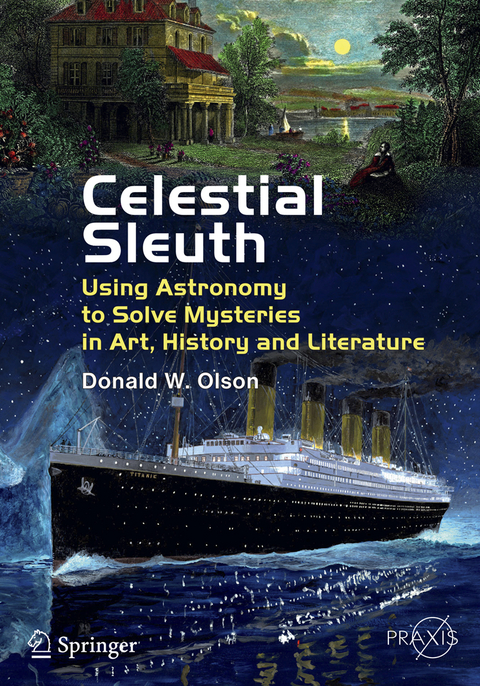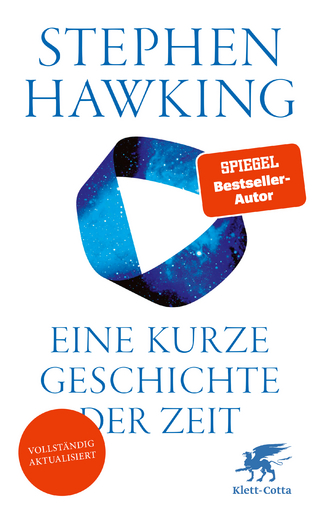
Celestial Sleuth
Springer-Verlag New York Inc.
978-1-4614-8402-8 (ISBN)
For a general audience interested in solving mysteries in art, history, and literature using the methods of science, 'forensic astronomy' is a thrilling new field of exploration. Astronomical calculations are the basis of the studies, which have the advantage of bringing to readers both evocative images and a better understanding of the skies.
Weather facts, volcano studies, topography, tides, historical letters and diaries, famous paintings, military records, and the friendly assistance of experts in related fields add variety, depth, and interest to the work. The chosen topics are selected for their wide public recognition and intrigue, involving artists such as Vincent van Gogh, Claude Monet, Edvard Munch, and Ansel Adams; historical events such as the Battle of Marathon, the death of Julius Caesar, the American Revolution, and World War II; and literary authors such as Chaucer, Shakespeare, Joyce, and Mary Shelley. This book sets out to answer these mysteries indicated with the means and expertise of astronomy, opening the door to a richer experience of human culture and its relationship with nature.
Each subject is carefully analyzed. As an example using the study of sky paintings by Vincent van Gogh, the analytical method would include:
- computer calculations of historical skies above France in the 19th century
- finding and quoting the clues found in translations of original letters by Van Gogh
- making site visits to France to determine the precise locations when Van Gogh set up his easel and what celestial objects are depicted.
For each historical event influenced by astronomy, there would be a different kind of mystery to be solved. As an example:
- How can the phase of the Moon and time of moonrise help to explain a turning point of the American Civil War - the fatal wounding of Stonewall Jackson at Chancellorsville in 1863?
For each literary reference to astronomy, itwas determined which celestial objects were being described and making an argument that the author is describing an actual event. For example, what was the date of the moonlit scene when Mary Shelley first had the idea for her novel “Frankenstein?”
These and more fun riddles will enchant and delight the fan of art and astronomy.
Dr. Donald Olson is a Professor of Physics and Astronomy at Texas State University, but prefers the terms “Celestial Sleuth.” Olson received his Ph.D. in physics from the University of California-Berkeley, and after studying galaxy structure for two years at the University of Texas at Austin, he settled into Texas State, where he has been teaching since the early 1980s. Over the past 25 years (1987-2012), the reputation of his department at Texas State University has been established by the publication of more than 40 articles published in such periodicals as The New York Times and Smithsonian Magazine. His work blurs the line between the hard science of forensic astronomy and the humanities. A longtime connoisseur of art and literature, Olson was approached in 1987 with a proposition that would help him merge the arts with his expertise in astronomy. An English professor asked for his help in interpreting astronomical references in Chaucer’s “Canterbury Tales.” Shortly afterward, a history professor had a similar request, this time looking at the impact of moonlight and the tides on the amphibious invasion at the Battle of Tarawa during World War II. He has since then gone on to be published in The New York Times, Los Angeles Times, Sky and Telescope, and Smithsonian magazine, which called Olson “…the leading practitioner of…'forensic astronomy’.”
Part I Astronomy in Art.- Van Gogh’s Lost Night Sky.- Van Gogh’s “Moonrise (Wheat Stacks).- Van Gogh’s Starry Nights.- Edvard Munch and the Blood-Red Sky of “The Scream”.- Edvard Munch’s “Girls on the Pier”.- Edvard Munch’s Starry Nights.- Monet in London.- Monet’s “Impression, Sunrise”.- The Moonrise Photographs of Ansel Adams.- Canaletto’s Night Festival Paintings of Venice.- The Night Skies of J. M. W. Turner.- Part II Astronomy in History.- The Moon and the Marathon.- Julius Caesar’s Invasion of Britiain.- The Boston Tea Party.- Paul Revere’s Midnight Ride.- Lincoln and the Almanac Trial.- Lincoln and the Leonids.- Stonewall Jackson’s Fatal Full Moon.- John Muir and Moonbows.- World War II – Pearl Harbor and the Waning Moon.- World War II: The Tide at Tarawa.- World War II: D-Day in Normandy.- World War II: “I’ll Met by Moonligh” – The Sinking of the USS Indianapolis.- What’s a Blue Moon.- Did the Moon Sink the Titanic?.- Part III Astronomy in Literature.- Chaucer – Moon, Tides, and “The Franklin’s Tale”.- Chaucer – Lunar Motion in “The Merchant’s Tale”.- Identifying a Meteor in James Joyce’s “Ulysses”.- William Blake’s “The Tiger”.- False Dawn in the “Rubaiyat of Omar Khayyam”.
| Erscheint lt. Verlag | 3.10.2013 |
|---|---|
| Reihe/Serie | Popular Astronomy | Springer Praxis Books |
| Zusatzinfo | 113 Illustrations, color; 52 Illustrations, black and white; XVII, 355 p. 165 illus., 113 illus. in color. |
| Verlagsort | New York, NY |
| Sprache | englisch |
| Maße | 168 x 240 mm |
| Themenwelt | Kunst / Musik / Theater |
| Sachbuch/Ratgeber ► Natur / Technik ► Weltraum / Astronomie | |
| Naturwissenschaften ► Physik / Astronomie ► Astronomie / Astrophysik | |
| Schlagworte | Astronomical Puzzles in Literature • Astronomy-based Historical Events • Astronomy in Art • Celestial Phenomena • Celestial Sleuthing • Forensic Astronomy • historical astronomy • Titanic and the Moon |
| ISBN-10 | 1-4614-8402-2 / 1461484022 |
| ISBN-13 | 978-1-4614-8402-8 / 9781461484028 |
| Zustand | Neuware |
| Haben Sie eine Frage zum Produkt? |
aus dem Bereich


